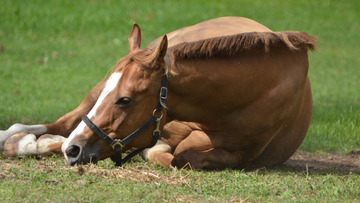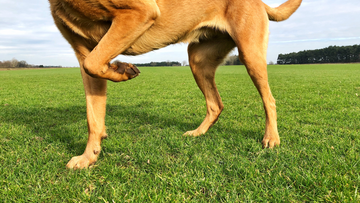As the temperatures grow colder, rain, snow, and ice accumulate in outdoor spaces and make barn work a muddy nightmare. Aside from the unappealing aesthetic of soggy, mud-encrusted horses, there are real risks associated with mud. Mud fever, which actually doesn’t involve any fever, is caused by a bacteria called Dermatophilus congolensis. If an infection that is left unattended can develop into more serious conditions such as cellulitis.
What does it look like?
Mud fever most commonly affects the lower portions of the leg. This is because the moisture provided by wet, muddy pastures is in closer proximity to the pasterns and heels of a horse. According to Scott Dunns Equine Clinic, pastern dermatitis (also called ‘cracked heels’) sees scabs and sores on horses’ legs.
Pink skin is more susceptible than darker skin, and red bumps that weep can be seen anywhere on the legs once the infection is established on the pastern.
Why does it happen?
As mentioned, horses living in moist environments without a place to dry off are prime targets for mud fever. Wet skins with bumps and scrapes give the bacteria an open door to infect.
Unfortunately, the scabby infection can be very itchy for horses, causing them to scratch their legs, and the cycle of infection continues. Horses with feathered legs are more prone to mud fever. The extra hair makes it even harder for mud and moisture to dry out.
According to Scott Dunns Equine Clinic, the use of creams, ointments, and oils meant to treat the infection only worsens it because it seals the moisture in.
Steps for prevention
For a proactive approach, create dry spaces for your horses before the mud strikes. Adding pea gravel or hog fuel (large wood chips and bark) to the highest point in your pasture will give water a chance to drain away.
Consider trimming feathered horses’ legs or stabling them in a dry stall at night to give their legs a chance to dry out. Towels, baby powder application, and hair driers are not out of the question when it comes to making sure their legs are dry.
Battling the infection
Removing leg scabs is vital to treating the infection because the bacteria are protected under the scabs and continue to multiply. Doing this in a careful, sterile manner will dry the affected areas and expose the bacteria to more oxygen – which they don’t handle well.
Soaking the horse’s legs in warm water and diluted Hibiscrub (chlorhexidine) will soften the scabs and allow easier removal. After removing the scabs, thoroughly rinsing and drying the legs with towels will act as a reset button for a horse. The process may have to be repeated, but with diligent work, should treat most cases.
If you’re dealing with a particularly tough case, involve your veterinarian. Sometimes, antibiotics are needed to beat down the bacteria.
Mud is a tough reality for many horse owners. Its seemingly constant presence throughout the fall and winter months means owners might need to go the extra mile creating dry spaces for horses. Watch for the early signs of mud fever, and be prepared to treat early and aggressively if irritated, bumpy skin starts appearing.






















